Table of Contents
I. Introduction
II. Chakras East and West
III. The Heart Chakra
IV. The Chakras in the New Testament
V. Biblical Meanings of Heart
VI. Jesus’ Teachings on the Heart Chakra
VII. The Kingdom of God
VIII. Parables of the Kingdom
IX. Entering the Kingdom
X. Conclusion
Epilogue
(Biblical references are to the Revised King James Version unless otherwise indicated.)
I. Introduction
The kingdom of God was of singular importance in Jesus’ teachings and mission. He initiated his public ministry preaching the kingdom of God and proclaiming it was at hand (Mk 1:14-15), and it remained foremost throughout his public ministry: “He went through every city and village, preaching and bringing the glad tidings of the kingdom of God.” Lk 8:1. It was of such overriding significance to all that Jesus was about that he urged his disciples: “But seek first the kingdom of God” (Mt 6:33), while he instructed in the Lord’s prayer, the only prayer he taught that is recorded in the gospels, that we pray to God that “Your kingdom come.” Mt 6:10. And it was among Jesus’ most precious gifts to his disciples: “I bestow upon you a kingdom, just as my Father bestowed one upon me.” Lk 22:29.
The kingdom of God, referred to in the Gospel of Matthew as the Kingdom of Heaven, was clearly fundamental to Jesus’ teachings and mission. As stated in The Dictionary of Biblical Imagery:
“The kingdom of God is a governing motif of the NT, with the term itself appearing well over a hundred times. It is particularly prominent in the Synoptic Gospels, where it serves as a leading image of Jesus’ mission.” (pp. 478-479)
Despite the importance of the kingdom of God in the gospels, its meaning is, at best, opaque. The gospels do not state explicitly what the kingdom of God is or, for that matter, where it is. Likewise, they are not altogether clear on its attainment—how we are to enter the kingdom. Consequently, Christian thinkers over the past two millennia have ascribed different meanings to the kingdom of God. These different interpretations have left the Christian world with diverse understandings of some of Jesus’ most basic teachings, including what he meant by the kingdom of God, how it can be attained, and even the meaning of salvation, which in Jesus’ teachings is closely related to the kingdom of God.
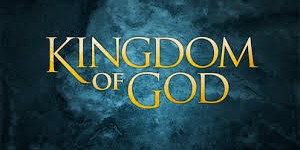 Many Jews of Jesus’ time lived with the expectation of a messiah who would establish an earthly kingdom that would restore the glory of King David’s kingdom. The gospels make clear that the establishment of an earthly kingdom was not Jesus’ purpose (e.g., Jn 18:36). Many Christians over the centuries came to believe that the kingdom of God would be attained after death by persons who had lived a virtuous life based on gospel precepts. This interpretation finds little support in the New Testament. For example, Paul did not understand the kingdom to be attained when the soul left the body after death. Instead, he wrote of putting on the incorruptible or spiritual body when we are transformed in Christ. 1 Cor 15, 2 Cor 5, Col 3. If what Jesus proclaimed was neither an earthly kingdom nor a place where virtuous souls go after death, what is the kingdom he proclaimed and how is it be attained?
Many Jews of Jesus’ time lived with the expectation of a messiah who would establish an earthly kingdom that would restore the glory of King David’s kingdom. The gospels make clear that the establishment of an earthly kingdom was not Jesus’ purpose (e.g., Jn 18:36). Many Christians over the centuries came to believe that the kingdom of God would be attained after death by persons who had lived a virtuous life based on gospel precepts. This interpretation finds little support in the New Testament. For example, Paul did not understand the kingdom to be attained when the soul left the body after death. Instead, he wrote of putting on the incorruptible or spiritual body when we are transformed in Christ. 1 Cor 15, 2 Cor 5, Col 3. If what Jesus proclaimed was neither an earthly kingdom nor a place where virtuous souls go after death, what is the kingdom he proclaimed and how is it be attained?
[pullquote]The kingdom of God was of singular importance in Jesus’ ministry. He initiated his ministry preaching the kingdom of God and proclaiming it was at hand.[/pullquote] A clearer conception of the kingdom of God and one that provides new insight into these age-old questions may be found in New Testament texts that, arguably, have not been correctly understood for the past two thousand years. These texts contain Jesus’ teachings on the chakras and, especially, the heart chakra. These teachings, woven together with Jesus’ other teachings, offer a more translucent and richer understanding of what he taught as the kingdom of God, the path to its attainment, and the nexus between the kingdom of God and salvation, issues as critical today as they were when Jesus walked the earth.
II. Chakras East and West
The chakras are subtle energy centers located in what is known as the energy body, a sheath of subtle energy surrounding and interpenetrating the physical body. There are seven major chakras in seven places in the energy body coinciding in the physical body from the base of the spine to the crown of the head. Eastern spiritual traditions, such as Hinduism and Buddhism, have long known about chakras and their significance for understanding human nature and for spiritual growth and transformation.
[pullquote]With the advent of Eastern spirituality into the West over the past 150 years, the chakras and the role they play in spiritual growth and transformation have become increasingly embraced by Western spiritual seekers.[/pullquote] With the advent of Eastern spirituality into the West over the past 150 years, the chakras and the role they play in spiritual growth and transformation have become increasingly embraced by Western spiritual seekersThis is because the chakras and their subtle energies provide a more comprehensive and deeper understanding not only of our humanness but also of fundamental processes that lie at the heart of spiritual transformation. Indeed, as Eastern spiritual traditions have long recognized, the spiritual quest must perforce take into account the chakras because their energies are deeply woven into our essence as spiritual beings.
The importance of the chakras, though, is not confined to the spiritual. Recognition of the role the chakras and their energies play in other areas of our lives is also emerging in Western thought. For example, the chakras and their energies offer a broader understanding of physical and psychological illness and well-being. Persons who see subtle energies often see a condition such as cancer first appearing in a person’s chakras and subtle energies before it manifests as a disease in the physical body. Similarly, psychological conditions such as anxiety and depression have energetic counterparts in a person’s chakras and energy field.
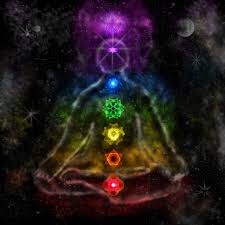
The Seven Major Chakras
Our physical bodies are deeply attuned with and sensitive to the subtle energies surrounding and interpenetrating them, while the mind can best be understood as a non-local energy field interacting in multiple nuanced ways with the chakras and other forms of subtle energy. Knowledge of the chakras, their energies and the effects they have on the mind and body greatly enhances our understanding of physical and psychological healing. While Western medicine and psychology are yet to recognize the chakras and subtle energies as essential to understanding human nature, many people have done so on their own as they seek to understand more fully the energetic foundations of health and healing.
Despite the important role the chakras have in many aspects of our lives, no major theory of personality in Western thought incorporates them or their subtle energies. Yet, a theory of personality that recognizes the chakras and their energies provides a more comprehensive understanding of who are as both physical and spiritual beings, as well as of the vital relationship of body, mind and spirit. Such an understanding would alter in fundamental ways current theories of personality as it illuminates the chakras and their energies as essential features of our humanness and the multiple ways they affect us physically, emotionally, mentally and spiritually. A theory of personality embracing the chakras and their energies has far-reaching implications for virtually every field of human endeavor, including education, psychology, medicine, and religion. Such a theory would mark a steep paradigm shift in understanding human personality, holding as it would that the chakras and their subtle energies are crucial to understanding how we think, perceive, feel and act—which is, after all, what personality is all about.
[pullquote]The chakras pose profoundly important questions about the relationship between the human body and subtle energies.[/pullquote] The chakras pose profoundly important questions about the relationship between the human body and subtle energies.Answers to these questions will challenge many conventional ways of thinking, especially when we consider that the chakras and their energies do not depend on the physical body for their existence. Rather, the physical body depends on the chakras and other subtle energies, which form the energetic template of the physical body, for its existence. What’s more, the chakras and their energies continue to exist after we die, remaining a part of us and our spiritual identities as we continue our journeys beyond the physical world, thus marking the chakras and their energies as deeply spiritual in nature. Indeed, the spiritual nature of the chakras and their energies allows us to see that they serve in critical ways as bridges of spirit, mind and body. Thus, an awareness of the chakras opens new vistas into understanding ourselves on all levels–physical, emotional, psychological and spiritual—as well as new ways of understanding Jesus and what he meant by the kingdom of God.
III. The Heart Chakra
The heart chakra is the energy center situated in the energy body in an area corresponding in the physical body to the center of the chest close to the heart. Each chakra has specific functions and, indeed, each chakra is a world unto itself. The heart chakra is unique in that it carries more than any other chakra the energy of love. When it is fully open and pure, the heart chakra radiates a very high vibration of energy, approaching love in its highest form. As such, the heart chakra is a vital center of the personality and, as the place within us where we feel love most deeply, a quintessential feature of our humanness.
[pullquote]Ideally, the openness of the mother’s heart chakra and her love for her infant sparks the light in the heart chakra of her infant, joining mother and infant together in a deep bond of love.[/pullquote] Ideally, the openness of the mother’s heart chakra and her love for her infant sparks the light in the heart chakra of her infant, joining mother and infant together in a deep bond of love. This bond, both energetic and spiritual, is one of the most important of all human bonds. The mother’s love flowing from her heart chakra and its opening of the infant’s heart chakra creates the foundation of the child’s, and later the adult’s, sense of self. It also instills in the infant the capacity for joy, for this capacity is one of the most salient features of an open heart chakra. The mother infant-bond at the level of the heart chakra also forms the foundation for the child’s spiritual life, as she learns in the arms of her mother to love and be loved at the most sacred place within her, which is within the depths of the heart chakra.
 The heart chakra and its energy of love also play a significant role when we fall in love. In fact, the opening of the heart chakra is probably the most defining characteristic of falling in love. When we fall in love our heart chakra opens to a deeper level and our entire energy field becomes filled with love’s high energetic vibration. This vibration gives falling in love its magical quality as we are lifted into a higher energetic frequency and feel transformed by it. Life and the world take on new meaning. The heart chakra and the high vibration of love flowing from it help to explain why falling in love is such a powerful and, potentially, spiritually transforming experience.
The heart chakra and its energy of love also play a significant role when we fall in love. In fact, the opening of the heart chakra is probably the most defining characteristic of falling in love. When we fall in love our heart chakra opens to a deeper level and our entire energy field becomes filled with love’s high energetic vibration. This vibration gives falling in love its magical quality as we are lifted into a higher energetic frequency and feel transformed by it. Life and the world take on new meaning. The heart chakra and the high vibration of love flowing from it help to explain why falling in love is such a powerful and, potentially, spiritually transforming experience.
In many ways, romantic love sits at the heart of Western culture.The history of our hearts is one of the most defining narratives of our lives as we long for love, fall in love, fall out of love, and seek to heal the wounds that love so often brings. Yet we do not recognize what romantic love and its energies are really about. We too easily become lost in love’s labyrinth and lose the high vibration and consciousness of love that we once felt so deeply. Too often we do not grasp the miracle unfolding in the depths of the heart chakra when in love, and over time we fail to honor the preciousness of the experience in ourselves and in our beloved as the ego reasserts its dominance and dislodges the high vibration of love within us. Then we feel, often bewildered, the pain of love lost.
[pullquote]But falling in love is much more than a magical encounter with the beloved. When we fall in love and the heart chakra opens, we are initiated into something truly grand and great. [/pullquote]But falling in love is much more than a magical encounter with the beloved. When we fall in love and the heart chakra opens, we are initiated into something truly grand and great.This is because the heart chakra connects us to the deepest of all mysteries, the mystery of Divine Love, and falling in love is an initiation into that mystery. Beyond the depths of our heart chakras lies the Hidden Chamber of the Heart, a “place” of pure light and love within us. This pure light and love is our true identity, our true essence. It is the Divine within us. Thus, in romantic love we are initiated, albeit in some small measure, into the Divine, for the opening of the heart chakra to its depths in romantic love is an opening to our essence of Divine Love, bringing us closer to the fulfillment of love’s highest calling, to know and become one with God. Indeed, when we open our heart chakras to their depths in love—and romantic love is but one of the ways we do this–we will find one of the most important keys to unlocking a fuller understanding of Jesus and his mission of love.
IV. The Chakras in the New Testament
We can reasonably conclude that Jesus knew about the chakras because certain New Testament passages can reasonably be interpreted as speaking of the chakras and their energies. These passages contain some of Jesus’ most important teachings, including those on salvation and the kingdom of God. The Book of Revelation also contains important teachings on the chakras and their energies. Indeed, the teaching in the Book of Revelation cannot be properly understood without knowledge of the chakras, for embedded in it are apocalyptic revelations about the chakras and the consequences of the use and misuse of their energies for each of us individually and for our world as a whole.
The Western world for the past two thousand years has known little about the chakras, with knowledge of the chakras consigned to the esoteric and, in some cases, heretical fringes of Western spirituality. Consequently, official Christendom has been unable to properly understand biblical texts in which Jesus teaches about the chakras, and the meaning of these texts has remained obscure or misunderstood. The result is that over the past two millennia Christian spirituality has failed to reflect seminal aspects of spiritual transformation found in Jesus’ teachings. Discovering that Jesus knew and taught about the chakras marks an exciting watershed in Western spirituality and the Christian narrative upon which it is based. Jesus’ teachings on the chakras, properly understood, reveal that spiritual transformation is intimately linked to the chakras and their energies. This knowledge, in turn, provides a much fuller understanding of Jesus, his mission of salvation, and the kingdom of God that he taught and lived.
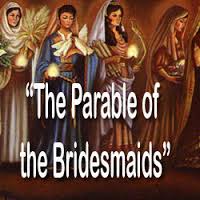 A major teaching on the chakras and their energies is found in Jesus’ parable of the wise and foolish virgins, also known as the Parable of the Bridesmaids. In this parable, ten virgins with lamps and oil await the arrival of the bridegroom. Five of the virgins burn their oil while the five do not. When the bridegroom’s arrival is delayed, the virgins who burnt their oil run out of it, and they ask the other virgins to share their oil with them. The wise virgins, in what seems to be a selfish response, refuse to share their oil, and the virgins without oil leave in search of oil. In their absence, the bridegroom arrives and the wedding feast commences. When the virgins who went in search of oil return, they are barred from entering the wedding feast.
A major teaching on the chakras and their energies is found in Jesus’ parable of the wise and foolish virgins, also known as the Parable of the Bridesmaids. In this parable, ten virgins with lamps and oil await the arrival of the bridegroom. Five of the virgins burn their oil while the five do not. When the bridegroom’s arrival is delayed, the virgins who burnt their oil run out of it, and they ask the other virgins to share their oil with them. The wise virgins, in what seems to be a selfish response, refuse to share their oil, and the virgins without oil leave in search of oil. In their absence, the bridegroom arrives and the wedding feast commences. When the virgins who went in search of oil return, they are barred from entering the wedding feast.
Like all parables, this one is symbolic and can have several meanings. One meaning, and one that makes sense of what looks on the surface to be a very enigmatic and even confusing teaching, is that the lamps represent the chakras, the oil the energies of the chakras, and the wedding feast the Divine Marriage, or union with God. The virgins who consumed their oil do not have the energy needed to participate in the wedding feast. In other words, they do not have the energy necessary to achieve the spiritual transformation bringing union with the Divine. In contrast, the virgins who did not use up their oil continue to possess within them the necessary energy, signified by the oil, to consummate the Divine union.
[pullquote]This parable simply and elegantly teaches the importance of the chakras and their energies for becoming one with God.[/pullquote]This parable simply and elegantly teaches the importance of the chakras and their energies for becoming one with God. If we use the energies of the chakras wisely, we can attain union with God. But if we misuse them, this union will be difficult to achieve. This parable takes on even more significance when we come to see, as discussed further below, that union with God is the very kingdom Jesus came to reveal and the salvation he offered to the world.
Jesus also taught about the chakras when he spoke of seeing through the single eye: “The light of the body is the eye: if therefore thine eye be single, thy whole body shall be full of light.” KJV Mt 6:22. (See also KJV Lk 11:34.) Jesus’ reference to the single eye can be understood to refer to the third eye-chakra, the spiritual energy center located in the energy body corresponding in the physical body to the area in the center of the forehead just above the eyebrows. When the third-eye chakra opens to its depths, it becomes a portal to the Divine and a source of light and of higher knowing and consciousness. Jesus underscored the spiritual importance of the third-eye chakra when he warned that if it is “evil” it fills us with darkness: “But if thine eye be evil, the whole body shall be full of darkness.” KJV Mt 6:23. (See also KJV Lk 11:34.)
Jesus spoke of the single eye, denoting the third-eye chakra and spiritual sight, and not the eyes, which would denote the two physical eyes and physical sight. The opening of the third-eye chakra, known also as the wisdom eye, for spiritual awakening and higher consciousness has long been known in Eastern traditions as a major spiritual achievement. Jesus’ speaking of the single eye strongly suggests, like the parable of the wise and foolish virgins, that he knew about the chakras and that opening the third-eye chakra gives one spiritual sight and knowing and fills one with light and light’s high vibration of energy.
Jesus’ transfiguration on Mount Tabor does not tell us about the chakras. However, it does tell us that Jesus knew he was a being of pure light and that he revealed this to his disciples: “Now after six days Jesus took Peter, James and John his brother, brought them up on a high mountain by themselves, and was transfigured before them. His face shown like the sun, and His clothes became white as the light.” Mt 17:1-2. (See also Mk 9:2-3; Lk 9:29). The transfiguration teaches that Jesus knew about subtle energies and that in his essence he was these energies.
Further confirming that Jesus knew of subtle energies is the gospel passage in which he feels a loss of energy when an infirm woman touches his garment and is healed: “And Jesus immediately knowing in Himself that power had gone out of Him, turned around in the crowd and said, ‘Who touched My clothes?’” Mk 5:30. Jesus’ energy was so powerful that the woman was healed at the very moment Jesus felt energy going out of him. Mk 5:29. We see the same power of Jesus’ energy in other healings in which people touched his clothing and were healed: “And as many as touched (the hem of his garment) were made perfectly well.” Mt 14:36.
[pullquote]The most extensive treatment of the chakras in the New Testament is in the Book of Revelation, also known as the Revelation to John.[/pullquote]The most extensive treatment of the chakras in the New Testament is in the Book of Revelation, also known as the Revelation to John. This text, which is part of the New Testament canon, is a brilliant apocalypsis, or unveiling, of the chakras and the consequences of the use and misuse of their energies. (The word apocalypse is derived from the Greek apocalypsis, meaning an unveiling or uncovering.) Widely believed to be written decades after Jesus’ death by St. John, one of Jesus’ closest disciples, Revelation reveals fundamental truths about the chakras, the spiritual nature of their energies, the crucial role they play in spiritual transformation, and their relationship to what he taught as the kingdom of God.
Jesus first appears to John in Revelations with the seven major chakras fully open and radiating brilliant light, not unlike how he had appeared to John years earlier on Mt. Tabor:
“Then I turned to see the voice that spoke with me. And having turned I saw seven golden lampstands, and in the midst of the seven lampstands One like the Son of Man, clothed with a garment down to the feet and girded about the chest with a golden band. His head and His hair were white like wool, as white as snow, and His eyes like a flame of fire; His feet were like fine brass, as if refined in a furnace, and His voice as the sound of many waters. He had in His right hand seven stars, out of His mouth went a sharp two-edged sword, and His countenance was like the sun shining in its strength.” Rev 1:12-16
The seven lampstands symbolize the chakras, just as the lamps in the parable of the wise and foolish virgins symbolize the chakras. Jesus holding seven stars signifies his mastery of the energies of the chakras, which Revelation heralds as a monumental spiritual achievement that we too are called to accomplish in the teachings running throughout Revelation, beginning with Jesus’ teaching on the chakras in his messages to the seven churches (Rev 2-3), which are also symbolic references to the chakras.
It is possible that John did not know about the chakras and therefore used something familiar to him, lampstands, to describe the seven lights he saw in Jesus’ midst. It is also possible that John, as one of Jesus’ closest disciples, knew about the chakras and that he described them symbolically so that the deeper meaning of Revelation would be safeguarded for those who also knew, or would later come to know, about the seven energy centers and would recognize and benefit from the profound spiritual teachings encoded in Revelation.
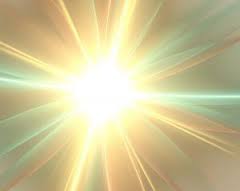 As such, Revelation’s symbolic use of lampstands and churches to refer to the chakras, which are also referred to as seven bowls and seven seals, if nothing else, served to ensure he teachings would not be rejected as heresy by what later became the official Church and that they would be available to those, as Jesus states In Revelation, who could understand Revelation’s symbolic truths: “He who has an ear, let him hear what the Spirit says to the seven churches.” Rev 2:7. We today, hopefully, are among those who can hear what is being revealed.
As such, Revelation’s symbolic use of lampstands and churches to refer to the chakras, which are also referred to as seven bowls and seven seals, if nothing else, served to ensure he teachings would not be rejected as heresy by what later became the official Church and that they would be available to those, as Jesus states In Revelation, who could understand Revelation’s symbolic truths: “He who has an ear, let him hear what the Spirit says to the seven churches.” Rev 2:7. We today, hopefully, are among those who can hear what is being revealed.
Three centuries after John wrote down his vision, the Book of Revelation became part of the official church canon not because it was correctly understood by early church fathers but because it was believed to have been written by John, one of the original disciples, thus meeting one of the criteria for inclusion in the canon. Even today most Christians do not understand Revelation, too often believing that it is a prophecy set in stone, which it is not. A fuller discussion of the chakras in the Book of Revelation can be found in the article “The Lost Churches of the New Testament” at www.christianityandthechakras.com.
[pullquote]New Testament teachings on the chakras are recognized by spiritual teachers from other traditions. For example, a spiritual master in the Hindu tradition, Swami Sri Yukteswar, understood the lampstands in Revelation to be references to the chakras.[/pullquote]New Testament teachings on the chakras are recognized by spiritual teachers from other traditions. For example, a spiritual master in the Hindu tradition, Swami Sri Yukteswar, understood the lampstands in Revelation to be references to the chakras. He characterized the lampstands, or chakras, as “the true Light”, similar to John’s characterization of the chakras as “the Spirits of God” (Rev 4:5). Swami Sri Yukteswar also identified the chakras as spiritual portals, writing that that the Spirit manifests through them as pathways from human to Divine consciousness. Succinctly describing the spiritual essence of the chakras and their role in spiritual transformation, he wrote: “Through these seven centers or chakras the Ego or son of man passes toward Divinity.” (The Holy Science, p. 109.)
Another master from the Hindu tradition, Paramahansa Yogananda, widely known for the classic account of his spiritual journey, The Autobiography of a Yogi, also wrote about Jesus’ teachings on the chakras. He interpreted the seven lampstands, churches, stars, seals and angels in Revelation as references to the seven major chakras, which he called spiritual cerebrospinal centers. Identifying these centers as keys to understanding the teachings given to John in Revelation, he wrote:
“Man’s body, unique among all creatures, possesses spiritual cerebrospinal centers of divine consciousness in which the descended Spirit is templed. They are known to the yogis, and to St. John—who describes them in Revelation as the seven seals, and as seven stars and seven churches, with their seven angels and seven golden candlesticks.” (The Second Coming of Christ, Vol. I, p. 109).
[pullquote]Paramahansa Yogananda not only identifies the chakras and their energies as spiritual centers of divine consciousness within us, he also asserts that these centers distinguish us from other creatures in the natural world. [/pullquote]Paramahansa Yogananda not only identifies the chakras and their energies as spiritual centers of divine consciousness within us, he also asserts that these centers distinguish us from other creatures in the natural worldAll creatures in the natural world have energy, even subtle energies. But, unlike other creatures, humans are uniquely endowed with spiritual energy centers. If this is true, a complete understanding of the human personality must include the chakras and their effects on all aspects of our lives—physical, emotional, mental and spiritual.
 We thus see in the gospels and in Revelation that Jesus knew about the chakras and taught about them as keys to spiritual transformation and union with the Divine. Jesus’ teachings and mission are illuminated by understanding the chakras and their energies. In his transfiguration on Mount Tabor and in his appearance to John in Revelation, Jesus shows us that to be like him is to be filled with light. These revelations, moreover, affirm what we are told in the opening verses of the Gospel of John: that Jesus is light and that we too are light. Jn 1:1-9. Knowing about the chakras, the churches within us, takes on critical importance in order for us to become, like Jesus, filled with light and to understand more fully what he taught as salvation, which involves the transformation from human to divine consciousness. One of the chakras, the heart chakra, plays a special role in this transformation and, even more importantly, in knowing what Jesus preached as the kingdom of God.
We thus see in the gospels and in Revelation that Jesus knew about the chakras and taught about them as keys to spiritual transformation and union with the Divine. Jesus’ teachings and mission are illuminated by understanding the chakras and their energies. In his transfiguration on Mount Tabor and in his appearance to John in Revelation, Jesus shows us that to be like him is to be filled with light. These revelations, moreover, affirm what we are told in the opening verses of the Gospel of John: that Jesus is light and that we too are light. Jn 1:1-9. Knowing about the chakras, the churches within us, takes on critical importance in order for us to become, like Jesus, filled with light and to understand more fully what he taught as salvation, which involves the transformation from human to divine consciousness. One of the chakras, the heart chakra, plays a special role in this transformation and, even more importantly, in knowing what Jesus preached as the kingdom of God.
V. Biblical Meanings of Heart
While the literal meaning of heart is of an organ of the body, heart in everyday language is often used to speak of something other than the physical heart. This is also true of the Bible in which its authors use ‘heart’ to express a host of meanings. They use heart to signify courage (e.g., Ps 27-3), emotions (e.g., Ex 4:14; Ps 39:3), desire (e.g., Gen 34: 3, 8; Ps 37:4), will (e.g., Deut 2:20; Mt. 15:19), and the seat of despair (e.g., Deut 28:65). Additionally, heart stands for intellect and memory (e.g., Gen 6:5; Ps 77:6; Eccles 2:1, 15; Lk 2:19; Mt 9:4), reasoning (e.g., Lk 3:15), and the capacity to discern (1 Kings 3:9), as well as for the place within us where we hold what we value the most (Mt 6:21, Lk 6:45).
The Bible also uses heart to denote our innermost essence, that which is most essential to us as spiritual beings and that upon which turns our relationship with God. The importance of our relationship with God at the level of the heart is found in the injunction that we seek God with all our hearts (Deut 4:29; 6:5). It is also seen in the heart being a place of defiance of God, such as when the heart is proud (cf. 2 Chron 82:26), hardened (Ex 4:14, 21; 7:3; 8:15), evil (1 Sam 17:28), deluded (Is 44:20) or grown dull (Is 9:10). Likewise, a person whose heart is uncircumcised, or closed, is deemed to be cut off from God (Deut 10:16; Jer 9:16; Rom 2:29). And lest we fail to recognize the heart’s centrality in the spiritual quest, we are told that we must be transformed in our hearts (Ezek. 18:31) because in our hearts God will look to see if we are truly his people (1 Sam 16:7).
Thus, we find in the Bible many meanings for heart, which is used over 900 times in the Old and New Testaments. It is used to signify essential features of our personalities, as well as a “place” in our innermost being of higher spiritual truths. As we have seen in gospels texts and in Revelation, Jesus knew and taught about the chakras and their energies as vital to our essence as spiritual beings and to spiritual transformation. If Jesus knew about the chakras, as seems likely in light of the New Testament texts discussed above, it is hard not to conclude that some of his teachings on the heart are in fact teachings on the heart chakra, a “church” within us of high spiritual energies endowed with their own unique nature and qualities. Knowledge of this spiritual center opens us to a deeper understanding of Jesus’ life and teachings and, ultimately, to a path to what he proclaimed as the kingdom of God.
VI. Jesus’ Teachings on the Heart Chakra
[pullquote]The history of our heart is one of the most defining narratives of our lives as we long for love, fall in love, fall out of love, and seek to heal the wounds that love so often brings.[/pullquote]If the heart chakra is the energy center where we feel most intensely the energy of love, we would expect that Jesus, a master of love, would have taught about the heart chakra. Indeed, in certain New Testaments passages we find Jesus using the word ‘heart’ in ways that strongly suggest he is speaking of the heart chakra.
When he says, for example, “Blessed are the pure in heart, For they shall see God.” (Mt 5:8), he may in fact be teaching of the heart chakra and its role in salvation. This beatitude from Jesus’ Sermon on the Mount can be interpreted to mean that those whose heart chakras are pure in love will open to Divine Love, which is tantamount to seeing God. Opening to the Divine through the heart chakra is possible because what lies beyond the depths of the heart chakra is what we have referred to as Hidden Chamber of the Heart. This chamber is not a physical place within us. Rather, it is the indwelling within us of our divine essence of Love and Light. The heart chakra, purified in love, becomes a gateway, a portal, to this Love and Light. It is then, as Jesus says, that we will experience God as we pass from the experience of human love to that of Divine Love, the journey from human consciousness to Divine Consciousness.
John in Revelation appears to have experienced this transformation. After receiving Jesus’ messages to the seven churches, or chakras, he hears a voice and turns.  Thereupon he sees a door standing open and One seated upon a throne. Rev 4:2. The open door may be interpreted as John’s experience of having, within the innermost depths of his heart chakra, opened to the pure Light and Love within him, which he describes as the One. This passage may be telling us that John, who was known as the most beloved of Jesus’ disciples, attained the purity of heart that allowed him to directly experience the Divine. The passages preceding John’s encounter with the One are revelations about the chakras. It therefore is reasonable to conclude that John’s experience of the open door also speaks of the chakras and, more specifically, the heart chakra and what lies beyond its depths: an encounter with the Divine.
Thereupon he sees a door standing open and One seated upon a throne. Rev 4:2. The open door may be interpreted as John’s experience of having, within the innermost depths of his heart chakra, opened to the pure Light and Love within him, which he describes as the One. This passage may be telling us that John, who was known as the most beloved of Jesus’ disciples, attained the purity of heart that allowed him to directly experience the Divine. The passages preceding John’s encounter with the One are revelations about the chakras. It therefore is reasonable to conclude that John’s experience of the open door also speaks of the chakras and, more specifically, the heart chakra and what lies beyond its depths: an encounter with the Divine.
Jesus also appears to be teaching of the heart chakra when he declares: “He who believes in Me, as the Scripture has said, out of his heart will flow rivers of living water.” Jn 7:38. Jesus as Christ is the incarnation of the Divine, of pure Light, pure Love and pure Consciousness. We are told this in the prologue to the Gospel of John: “In Him was life, and the life was the light of men… That was the true Light which gives light to every man who comes into the world.” Jn 1:4, 9. As we have seen, Jesus unveiled his essence of pure Light in his transfiguration and in his appearance to John in Revelation. Thus, to believe in Jesus, the Light, is to realize the Christ, the Light, within us, for we share with Jesus and he shares with us this same divine nature.
 When one comes to know one’s divine essence, Jesus seems to be saying, one’s heart chakra will open to the Light within and that Light will flow from the well spring of the heart chakra like “rivers of living water”. In other words, the high vibration of Divine Love and Light, which is one’s Christ essence, or one’s Sacred Heart, will flow from the depths of one’s heart chakra when one has come, like John, to truly know the Christ within. Jesus spoke of this knowing when he foretold to his disciples their experience of the inner Christ and the union it would bring with him and with God: “At that day you will know that I am in My Father, and you in Me, and I in you.” Jn 14:20.
When one comes to know one’s divine essence, Jesus seems to be saying, one’s heart chakra will open to the Light within and that Light will flow from the well spring of the heart chakra like “rivers of living water”. In other words, the high vibration of Divine Love and Light, which is one’s Christ essence, or one’s Sacred Heart, will flow from the depths of one’s heart chakra when one has come, like John, to truly know the Christ within. Jesus spoke of this knowing when he foretold to his disciples their experience of the inner Christ and the union it would bring with him and with God: “At that day you will know that I am in My Father, and you in Me, and I in you.” Jn 14:20.
The purity of the heart chakra is thus critical for one to “see God” and for “rivers of living water” to flow from the depths of one’s innermost being. Yet, Jesus warns that the spiritual transformation giving birth to these experiences will not be attained if the heart chakra is impure. Jesus thus speaks of the dangers of living with a heart chakra filled with energies that are not of light and love: “A good man out of the good treasure of his heart brings forth good, and an evil man out of the evil of his heart brings forth evil. For out of the abundance of his heart his mouth speaks.” Mt 12:35. In this passage, we again see that the heart chakra is intimately linked to our innermost being and the good or evil that lies within us.
[pullquote]Knowing that the heart chakra, the center of love within us, is a portal to the Divine helps us to better understand Jesus’ call for us to love.[/pullquote]Knowing that the heart chakra, the center of love within us, is a portal to the Divine helps us to better understand Jesus’ call for us to love. When he was asked which was the greatest commandment, he answered: “You shall love the Lord your God with all your heart, with all your soul, and with all your mind. This is the first and greatest commandment. And the second is like it: You shall love your neighbor as yourself. On these two commandments hang all the Law and all the Prophets.” Mt 22:36. On the eve of his crucifixion and death he reiterated the primacy of love: “This is my commandment, that you love one another as I have loved you.” Jn 15:12.
It is in loving God and others that our heart chakras are filled not with darkness but with light. And, as our love becomes pure and selfless, we merge beyond the innermost depths of our heart chakras with our divine essence of Light and Love. Eastern spiritual traditions also teach of a chakra as a pathway to the Divine. In Hinduism, for example, the heart chakra, although important, is not considered to be the primary “portal” to union with the Divine. Rather, the third-eye chakra holds this distinction. Thus, Hinduism places great importance on opening the third-eye chakra, believing that when this energy center is fully open, it becomes a doorway to one’s essence of Divine Light. As noted above, Jesus, while not emphasizing in his teachings the third-eye chakra, referred to the single eye as a source of light, recognizing it also as a pathway to the Divine. KJV Mt 6:22-23, Lk 11:33-34.
To be filled with light, whether from the depths of the heart chakra or the depths of the third-eye chakra, is to be like Jesus. It is to open to the Divine within us and to live that Divinity as Jesus did when he walked the earth. It is the same Light and Love whether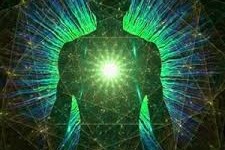 attained as in Eastern traditions through the third-eye chakra or as Jesus taught through the heart chakra. In Western culture, the heart chakra transformed in love appears to be the royal road to the Divine, the path by which we enter into the Divine Romance and find that the ultimate love and the ultimate lover is God. It is then that we come to know what Jesus meant by the kingdom of God, the kingdom that he came to earth to proclaim. And we can better understand what he told a scribe who professed belief in love as the highest commandment: “You are not far from the kingdom of God.” Mk 12:34.
attained as in Eastern traditions through the third-eye chakra or as Jesus taught through the heart chakra. In Western culture, the heart chakra transformed in love appears to be the royal road to the Divine, the path by which we enter into the Divine Romance and find that the ultimate love and the ultimate lover is God. It is then that we come to know what Jesus meant by the kingdom of God, the kingdom that he came to earth to proclaim. And we can better understand what he told a scribe who professed belief in love as the highest commandment: “You are not far from the kingdom of God.” Mk 12:34.
VII. The Kingdom of God
The gospels tell us that Jesus came to reveal the kingdom of God, and he spoke of it so often that it is considered to be central to his identity and to his mission of salvation. Knowing of the chakras, especially the heart chakra, helps us to understand more clearly what Jesus meant by the kingdom of God and how we are not only to attain it but also live it as did Jesus when he walked the earth.
Jesus was unequivocal that he had not come to establish an earthly kingdom. For example, in John 18:36 he declared: “My kingdom is not of this world.” And, while the kingdom of God can be understood to mean a heavenly realm into which virtuous souls pass upon death, it does not appear that Jesus came to proclaim this kind of kingdom either. While dominions of light almost certainly exist beyond the physical plane, Jesus seems to be revealing something more immediate when he spoke of the kingdom of God—something accessible to us while we live on earth. The kingdom Jesus preached and lived appears to be a kingdom within him that he taught was also within all men and women: an inner essence of Divine Light and Love common to all humanity. He came to awaken us to this truth, which arguably is the most fundamental among all the truths about salvation that he taught.
[pullquote]The kingdom of God understood in this way alters the salvation narrative from one of an earthly kingdom or an after-death realm to a spiritual kingdom that can be attained and lived on earth.[/pullquote]The kingdom of God understood in this way alters the salvation narrative from one of an earthly kingdom or an after-death realm to a spiritual kingdom that can be attained and lived on earth. Thus, Jesus’ proclamation that the kingdom of God is at hand can be understood as the unveiling of the divine essence within all men and women and its realization as the way to transform ourselves and our world. Jesus’ revelation of the Divinity of Light and Love within him and within us and of how to attain it is what he came to teach humankind as the means to dispel the darkness in us and our world, which is what salvation ultimately is about. (For further discussion of the relationship between light and salvation in Jesus’ teachings, see The Apocalypse of Light in the New Testament at www.christianityandthechakras.com.)
Jesus, when asked when the kingdom of God would come, responded: “The kingdom of God does not come from observation, nor will they say ‘See here!’ or ‘See there.’ For 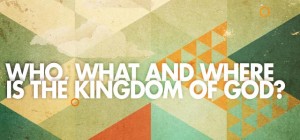 indeed, the kingdom of God is within you.” Lk 17: 20-21. The Greek words translated as “within” in this passage are entos hymin, which also can be translated “in your midst” or “within your grasp”. A very similar description of the kingdom is found in the non-canonical Gospel of Thomas in which Jesus states that the kingdom is both inside and outside us: “If your leaders say to you, ‘Look, the kingdom is in heaven,’ the birds of heaven will precede you. If they say to you, ‘it is in the sea,’ then the fish will precede you. Rather, the kingdom of God is inside you and outside you.” Gospel of Thomas 3:1-3.
indeed, the kingdom of God is within you.” Lk 17: 20-21. The Greek words translated as “within” in this passage are entos hymin, which also can be translated “in your midst” or “within your grasp”. A very similar description of the kingdom is found in the non-canonical Gospel of Thomas in which Jesus states that the kingdom is both inside and outside us: “If your leaders say to you, ‘Look, the kingdom is in heaven,’ the birds of heaven will precede you. If they say to you, ‘it is in the sea,’ then the fish will precede you. Rather, the kingdom of God is inside you and outside you.” Gospel of Thomas 3:1-3.
These passages in Luke and Thomas tell of a kingdom that is inner, outer, in our midst, and within our grasp. The difficulty in understanding the meaning of these descriptions is that our language, reflecting spatial concepts like “within”, “inside”, and “outside”, cannot adequately convey what Jesus is revealing, for he is revealing an experience that lies beyond the reaches of language and concepts of the mind. The kingdom Jesus is revealing must be experienced in order to be known, and this experience does not come through words or the parameters of the mind. Language and the mind are limited and to try to know the kingdom through word and reason is like trying to capture the ocean in a bottle. Language and the mind have their place, but they are not the means by which we will come to know the kingdom. Thus, Jesus taught about the kingdom using other ways that we have of knowing.
One way Jesus taught about the kingdom was in parables using metaphors to express what is beyond the mind’s grasp. He also taught about the kingdom by manifesting its power in his healing the sick, raising the dead, casting out demons, changing water into wine, multiplying loaves and fishes, and calming the forces of nature. He unveiled in these and other miracles the wondrous power of the kingdom. He further taught of the kingdom by revealing his divine essence of pure light, what Paul referred to as the incorruptible body (2 Cor 15:53-54), in three crucial events: his transfiguration, his resurrection, and his appearance to John in Revelation. What’s more, he taught of the kingdom as oneness with God by proclaiming that he came from the Father (Jn 16:28), he and the Father are one (Jn 10:30), his miracles were wrought by the Father (Jn 5:17-21), and he would return to the Father (Jn 14:28, 16:28).
In the Gospel of Thomas we find further elucidation of what Jesus meant by the kingdom of God. Immediately following the above-quoted passage in which Jesus says the kingdom is inside and outside us, he states that when we come to know ourselves, who we really are, we will know that we are children of God: “When you know yourselves, then you will be known, and you will know that you are children of the living father.” Gospel of Thomas 3: 4. This revelation, echoing Jesus’ revelation in Luke that the kingdom of God is within, links the kingdom of God with our true identities as children of God, with our divine essence of Light and Love.
VIII. Parables of the Kingdom
Jesus knew that the experience of our divine essence, the kingdom within us, could not be taught directly to the mind or known through reason, for it is beyond the mind to know and reason to understand. We find in the gospels that one way Jesus taught of the kingdom was through parables in which he compares the unknown to the known. In  parables Jesus teaches that the kingdom has many facets, as he uses different parable to teach different truths about the kingdom. Taken together, these truths reflect the majestic and miraculous nature of the kingdom, as the many facets of a gem reflect its opulence as a whole. Gospel passages explaining why Jesus taught in parables also reveal truths about the kingdom, as they speak to the difficulty that even Jesus had of making it known.
parables Jesus teaches that the kingdom has many facets, as he uses different parable to teach different truths about the kingdom. Taken together, these truths reflect the majestic and miraculous nature of the kingdom, as the many facets of a gem reflect its opulence as a whole. Gospel passages explaining why Jesus taught in parables also reveal truths about the kingdom, as they speak to the difficulty that even Jesus had of making it known.
Jesus likened the kingdom of God to a pearl of great price discovered by a merchant in search of beautiful pearls. Mt 13: 45-46. Upon discovering this precious pearl, the merchant sells all he owns so that he can buy the pearl. In this parable, Jesus is teaching that the kingdom of God is of a value above all else and that its attainment calls us to be willing to give up all that we have. Jesus similarly likens the kingdom to a treasure that a man finds hidden in a field. Mt 13:44. The finder immediately conceals the treasure while, with great joy, he goes off and sells all he owns so that he can buy the field and thereby acquire the treasure. Jesus is teaching that the kingdom of God is a hidden treasure that, once we become aware of it, merits all that we have, as does the pearl of great price, to attain it.
Jesus reveals another aspect of the kingdom in a parable in which he compares it to a tiny mustard seed that grows into a magnificent tree with branches upon which birds come to rest. Lk 13:18-19. The first stirrings of the kingdom within us can feel small and insignificant, like a tiny seed. But, like a seed that grows into a magnificent tree, the first stirrings of the kingdom within us and our lives, as insignificant as they may first appear, can blossom into something truly grand and great. Jesus teaches of yet another feature of the kingdom when he compares it to leaven that transforms meal into bread. Lk 13:20-21. The kingdom within us has the power to transform us from ego consciousness to Divine consciousness as leaven transforms meal into bread.
In these and other parables Jesus teaches that the kingdom of God is not outside of us and our world. Instead, he teaches the kingdom is like a precious pearl or treasure hidden within us that can grow into something extraordinary, like a small seed grows into a magnificent tree, and transform us and our lives, like leaven transforms meal into bread. Yet, even in these parables, the kingdom remains opaque and ist meaning not easy to understand. Why then did Jesus not teach more explicitly of the kingdom, leaving no doubt about what he meant?
The answer may be found in the reasons Jesus gives for teaching in parables. In Mt 13:11, he tells his disciples that he speaks to the multitudes in parables but not to them “[b]ecause it has been given to you to know the mysteries of the kingdom of heaven, but to them it has not been given.” Similarly, Mk 4: 33-34 tells us that Jesus taught the multitudes in parables but in private he taught his disciples differently: “And when they were alone, He explained all things to His disciples.” Thus, Jesus taught of the kingdom in more direct ways to his closest, and presumably more advanced disciples, than he did to the multitudes.
In Mt 13:13-15, Jesus, quoting Isaiah, further explains his use of parables to teach the multitudes, linking knowledge of the kingdom with the understanding of the heart:“Therefore I speak to them in parables because seeing they do not see, and hearing they do not hear, nor do they understand. And in them the prophecy of Isaiah is fulfilled, which says:
‘Hearing you will hear and shall not understand,
And seeing you will see and not perceive:
For the heart of this people has grown dull.
The ears are hard of hearing,
And their eyes have closed.
Lest they should see with their eyes
and hear with their ears.
Lest they should understand
with their hearts and turn,
So that I should heal them.’”
Thus, it appears that some disciples were spiritually awakened to a level that allowed Jesus to teach them of the kingdom in more direct ways. The transfiguration may be one of these more direct ways. We do not know of others because they are not recorded in the gospels. However, in Revelation Jesus came in a vision to John embodying the kingdom as pure light and John encounter the One. It is possible that as we become more spiritually awakened, the kingdom may be revealed to us, as is it was to John, in dreams or visions or in other ways.
[pullquote]Importantly, we also find in Jesus’ quote of Isaiah that persons who are spiritually advanced possess the capacity to “understand with their hearts.”[/pullquote]Importantly, we also find in Jesus’ quote of Isaiah that persons who are spiritually advanced possess the capacity to “understand with their hearts.” We are being told that the heart has its own way of knowing. And here we may reasonably conclude that the reference is not to the physical heart but to the heart chakra and what might be called a ‘mind’ of love within its innermost depths. It thus appears, as seen in his quote of Isaiah, that Jesus knew the kingdom of God cannot be known by the mind but by the love of the heart, predicating divine healing on love’s knowing within depths of the chakra of love: “Lest they should understand with their hearts and turn, So that I should heal them.”
IX. Entering the Kingdom
Jesus told the scribe who professed belief in love as the first and most important commandment that he was close to the kingdom of God. This passage and others juxtapose love and the kingdom of God. Knowledge of the heart chakra allows us to see more clearly love’s role in bringing us into the kingdom. It is the heart chakra transformed in love that becomes the path into the kingdom. As such, an understanding of the heart chakra and its transformation in love opens us to knowing and experiencing Jesus and his teaching in new ways. It is in these new ways that we can better understand the path to the kingdom of God that Jesus taught. And this path is not a path of the mind but rather of the heart, as it is in living with an open heart chakra and loving from its depths that we will come to know that it leads us to union with God.
[pullquote]The heart chakra’s high vibration of love is inimical to the lower vibration of the ego and the ego’s ways.[/pullquote]The heart chakra’s high vibration of love is inimical to the lower vibration of the ego and the ego’s ways. When we choose to love from the heart and as our love becomes pure and selfless, we become increasingly unfettered from the demands of the ego and its lower consciousness, and move beyond the depths of the heart chakra ever closer to the kingdom that lies “within our midst”. It is in purifying the heart chakra and opening to its high vibration of love that we fulfill our deepest longing and our most ardent desire—which is for union with the Divine. It is in this union that we find the joy and ecstasy that only love can bring. Thus, love, the greatest of all commandments, is the path to the kingdom, as Jesus calls us to love God with all our hearts, souls, minds, and strength (Mk 12:30); to love others as ourselves (Mk 12:31); and even to love those whom we consider to be our enemies (Mt 5:44).
The love Jesus proclaimed is not an emotion, but a divine energy that he revealed as his essence on Mount Tabor and to John in Revelation. The more we love from the depths of our heart centers, the more our energy fields vibrate at love’s high frequency of energy and the closer we come to knowing love as our divine essence. The heart 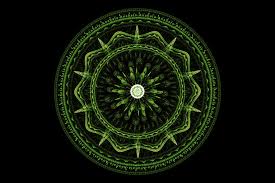 chakra, then, takes on crucial importance to the birth of the kingdom within us, for it is in the depths of the heart chakra that we will come to know love and the mind of love that allows us to let go of the ego and its attachment to the ordinary mind. This transformation is a rebirth into the Light and Love that is our birthright, the kingdom to which we belong as children of God. Jesus thus counsels Nicodemus, “Most assuredly, I say to you, unless one is born again, he cannot see the kingdom of God.” Jn 3:3.
chakra, then, takes on crucial importance to the birth of the kingdom within us, for it is in the depths of the heart chakra that we will come to know love and the mind of love that allows us to let go of the ego and its attachment to the ordinary mind. This transformation is a rebirth into the Light and Love that is our birthright, the kingdom to which we belong as children of God. Jesus thus counsels Nicodemus, “Most assuredly, I say to you, unless one is born again, he cannot see the kingdom of God.” Jn 3:3.
When we choose to relinquish ego consciousness and the ordinary mind and be guided instead by the intellect of the heart, the infinite mind of Light and Love within us, we will, as Jesus told Nicodemus, be born anew in Spirit. Jn 3:5. When our heart chakras become pure in loving God and others, the vibration of love will open us to the Light and Love that is our highest truth as we come to know ourselves as Light and Love and one with God. This Divine Marriage is the kingdom Jesus proclaimed and the salvation he brought to the world. We can then choose to live this truth to transform our world, for it is in the vibration of Light and Love that the darkness of the world decried by Jesus will be overcome. We can then confront and overcome darkness and evil, as Jesus did when he walked the earth, wielding the sword of Light and Love in service to the Divine.
[pullquote]When enough of us aspire to and attain this kingdom of the heart, the Divine Marriage, the world as we know it will change, for as Jesus said: “[H]e who believes in me, the works that I do he will do also; and greater works than these he will do.”[/pullquote]When enough of us aspire to and attain this kingdom of the heart, the Divine Marriage, the world as we know it will change, for as Jesus said: “[H]e who believes in me, the works that I do he will do also; and greater works than these he will do.” Lk 14:12.We therefore should seek the kingdom not in the world around us but in the depths of our hearts. It is then that we will be transformed in Light and Love, and in Light and Love we can choose to work to transform our world. It will not be in doctrine or dogma that this will happen but in hearts transformed by the fires of love. And then we will not confuse the kingdom of God with that which is not love and we will not follow those whose hearts are benighted with darkness and lack the light of love.
To enter the kingdom, then, is to love and to become love. As we aspire to this highest of callings, as we make the choice to love and live with the intent to become love, we will invariably encounter the tests of love. Those who choose to put love at the center of their lives will find that the path will not always be easy. But all that is asked, all that we are called to sacrifice, pales when compared to the kingdom to which Jesus calls us. Faced with the tests of love, we must hold true to love as our highest value and refuse to choose that which is not love. And in the times in our lives when we feel that to love with all our hearts, souls and minds is beyond our capacity and that the kingdom lies beyond our reach, Jesus offers himself as our guide, our protector, and our lover. When we ask him to dwell within our heart chakras, little by little, like a mustard seed growing into a mighty tree, we will become filled with Light and Love, coming ever closer to union with the Divine. And in our darkest moments, in times of our deepest despair when love’s challenges rise up before us like insurmountable mountains, Jesus will be with us to remind us that we do not stand alone and that “all things are possible with God.” Mt 10:27.
X. Conclusion
The chakras are not hypothetical constructs. Their spiritual energies are real and have been known for millennia in Eastern spiritual traditions. Knowledge of the chakras and their energies gives us a more complete understanding of ourselves and the spiritual energies woven deeply into every aspect of our being and lives. This understanding, in turn, allows us to see what has been unseen in key New Testament texts: that Jesus knew and taught about the chakras and their role in spiritual transformation.
The kingdom of God stands as the centerpiece of Jesus’ life and mission. He preached it, lived it, and revealed it as his essence. His teachings on the heart chakra, properly 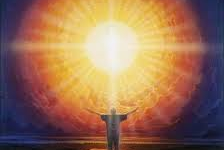 understood, give us a better understanding of the kingdom and how to attain it. When we live and love from the depths of the heart chakra, we open to the “hidden chamber” beyond its depths and encounter our essence of Light and Love and our identities as children of God. It is then that we enter the kingdom of God and become one with the Divine, the salvation Jesus offered to humankind. This transformation comes when we live love as our highest value and choose to let go of the ego and the ordinary mind and to enter into the mind of love and its endless possibilities that await us within the depths of our heart chakras.
understood, give us a better understanding of the kingdom and how to attain it. When we live and love from the depths of the heart chakra, we open to the “hidden chamber” beyond its depths and encounter our essence of Light and Love and our identities as children of God. It is then that we enter the kingdom of God and become one with the Divine, the salvation Jesus offered to humankind. This transformation comes when we live love as our highest value and choose to let go of the ego and the ordinary mind and to enter into the mind of love and its endless possibilities that await us within the depths of our heart chakras.
While we will know the kingdom of God only by experiencing it, its attainment can be taught. There may be many ways to attain it. Jesus taught that opening the heart chakra in love is one of those ways. For most persons shaped by Western culture and traditions, the heart chakra is the royal road to the kingdom of God. It is along this path of love that we come to realize that we carry within us not only the spiritual energies of the chakras but also the miraculous energy of love within our heart chakras and its limitless possibilities for transforming ourselves and our world.
Epilogue
Jesus taught that to enter the kingdom of God we must love purely and selflessly from the depths of the heart chakra. However, to do this we are not limited by Jesus’ teachings found in the gospels, for they may not contain all his teachings. The gospels tell us that he reserved some teachings for his most advanced disciples, and these teachings are not recorded in the gospels. There are many ways to open the heart chakra and to love from its depths. Some of these ways we know from Jesus’ gospel teachings and some we know from outside the gospels.
Jesus taught in the gospels the importance of prayer and selfless service. In prayer, we can ask that our hearts be open and filled with the Spirit of love and that we have the  strength and courage to love in the face of the darkness and adversity that we will invariably encounter. We can also ask Jesus to come into our heart chakras and help us to cleanse them of all that is not love. Jesus’ high vibration of Light and Love together with our desire to love can dispel any darkness we may carry and heal even the deepest wounds our hearts have known. Jesus also urged that we live for others, doing for others and giving to others. Acting for the well-being of others is honored in most religious traditions as a way to overcome the ego’s selfishness, especially when our doing and giving come from the heart. Living selflessly is also a way taught in many religions to undo the injustices of the world.
strength and courage to love in the face of the darkness and adversity that we will invariably encounter. We can also ask Jesus to come into our heart chakras and help us to cleanse them of all that is not love. Jesus’ high vibration of Light and Love together with our desire to love can dispel any darkness we may carry and heal even the deepest wounds our hearts have known. Jesus also urged that we live for others, doing for others and giving to others. Acting for the well-being of others is honored in most religious traditions as a way to overcome the ego’s selfishness, especially when our doing and giving come from the heart. Living selflessly is also a way taught in many religions to undo the injustices of the world.
Three other ways of opening the heart chakra are meditation, visualization, and love-making. When these are done with the intention to love and in the service of love, we are increasingly open to the love within us and come ever closer to union with God.
Meditation, like prayer and selfless service, can open our hearts to love. Meditation is a way to still the ordinary mind. When we still the ordinary mind, we can become attuned and open to the mind of love in the depths of the heart chakra. In this way meditation helps to shift our consciousness away from its identification with the ego and its ways of being and knowing toward the heart chakra and its ways of being and knowing. Visualization, too, can help us to open the heart chakra and to love more. Using visualization we can bring light and its high vibration of energy into our heart chakras, as well as into other chakras, to clear them of the low vibration of thoughts, emotions, memories and desires that are not of love, such as fear, anger, hatred, and envy, as well as to heal the wounds of the heart from traumas or betrayals of love. A violet light visualization invoking the Holy Spirit can be found at www.christianityandthechakras.com.
[pullquote]Love-making is another very important way in which we can open our hearts more to love. Our sexual energies, the spiritual energies of the lower chakras, are the most powerful energies within us.[/pullquote]Love-making is another very important way in which we can open our hearts more to love. Our sexual energies, the spiritual energies of the lower chakras, are the most powerful energies within us. When used properly, which is in the service of love, they hold a tremendous potential to transform us spiritually. They also can cause harm to us spiritually when not used properly, that is, when they are not used as an expression of love. When we use our sexual energies in a committed relationship in which our hearts are open to the beloved, sexual energies during love-making flow upward into our heart chakras, filling them with a higher vibration of energy. When the energies of the lower chakras merge with the energies of the heart chakras, the high vibration of these conjoined energies fills our entire energy field and lifts us into a higher consciousness, especially at the moment of orgasm. When love-making understood in this way is combined with a life of prayer, service, meditation and visualization, this higher consciousness can be sustained beyond the experience of making love.
Prayer, selfless service, meditation, visualization and love-making each open the heart chakra in different ways. When they are brought together in a life committed to love, each of them enhances the other. For example, the cleansing effects of visualization enhances love-making, which in turn enhances meditation’s effect of stilling the mind, and these acts and their effects bring a higher consciousness into our service to others. Ideally, these five practices, combined with the intent to love and to become love, allow for love to be increasingly woven into every facet of our lives. We can begin with cultivating one or two of these practices, and over time we can add the others when it is possible. For example, a person not in a committed relationship may not have love-making available, but can learn to use visualization to bring the energies of the lower chakras into the heart. When three of four of these practices become everyday parts of our lives, we will come closer to realizing the Love that is our heart’s true desire.

